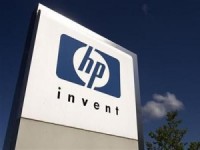 The OEM’s 1Q2013 results were more positive, with analysts noting that printing appears to have helped its growth.
The OEM’s 1Q2013 results were more positive, with analysts noting that printing appears to have helped its growth.
The Motley Fool reports that HP’s quarterly results for the first quarter of 2013 were “better-than-expected”, particularly in terms of share prices, with a higher than average adjusted EPS of $0.82 (€0.62) compared to analyst estimates of $0.71 (€0.54) prior to the revelation of the results. With the Autonomy acquisition crisis taking place in the last quarter there were “no unsettling surprises” for the OEM in this round of results.
Another reason for the positive results was that two major service contracts were expected to end in 4Q2012 that have in fact been extended to halfway through 2013, which has “allowed the services business to earn a small profit” in contrast to expectations of a loss. The site noted in turn that “printers [have] led HP back from the brink” in 1Q2013, stating that the printing group “was the only business unit” other than financial services to see a yearly earnings increase.
The printing division saw its revenue decline five percent from last year, but earnings before taxes increased 25 percent from $761 million (€1.153 billion) to $953 million (€1,444 billion), whilst operating margin increased to 16.1 percent. The site noted that the decline “can largely be explained by HP’s decision to cut down on sales of low-end consumer printers” as “HP loses a significant amount of money up front when selling these printers”, and the “proliferation of generic ink” has made it more difficult for the OEM to sell enough ink to “offset the initial loss”.
Noting that “exiting this business will thus improve profit despite reducing revenue”, the site added that for HP “printing is the one business where [it] has a clear leadership position”, and that it is “poised to capitalize on its strength there to offset weakness elsewhere”. Two new initiatives, Ink Advantage and Ink in the Office, have also boosted the company’s margins recently.
Ink Advantage reduced ink prices in emerging markets, which boosted HP’s market share “compared to generic ink providers”, and the site notes that this is “part of a broader shift away” from the razor and razor blades model, so HP “does not take an up-front loss selling each printer”.
Ink in the Office meanwhile targets SMBs and “aims to move [them] from laser printers to high quality, fast inkjets”, with The Motley Fool stating that HP’s reliance on Canon for laser technology has now forced to act, the OEM believing that “shifting more businesses from laser printers to inkjets will improve the customer value proposition while boosting HP’s margins”. In turn, such a move could put “long term pressure” on Canon, which has until now “benefitted significantly” from the laser printer relationship it has with HP.
Another reason given for the positive results was the decline of the yen – a strong yen “drove down printing margins” due to HP buying Canon components for laser machines, but a “tailwind” in the exchange rate now means HP could “see further printing margin” in the future.
The site concluded of the results: “Meg Whitman’s turnaround plan for HP still has a long way to go. However, last quarter was a good down payment on future improvements. The strength in printing is particularly comforting, as it will provide a strong base of profitability to fund investments elsewhere in HP.
“The massive wave of mobile computing has done much to unseat the major players in the PC market, including venerable technology names like Hewlett-Packard. However, HP’s rapidly shifting its strategy under the new leadership of CEO Meg Whitman. But does this make HP one of the least-appreciated turnaround stories on the market, or is this a minor blip on its road to irrelevance?”
